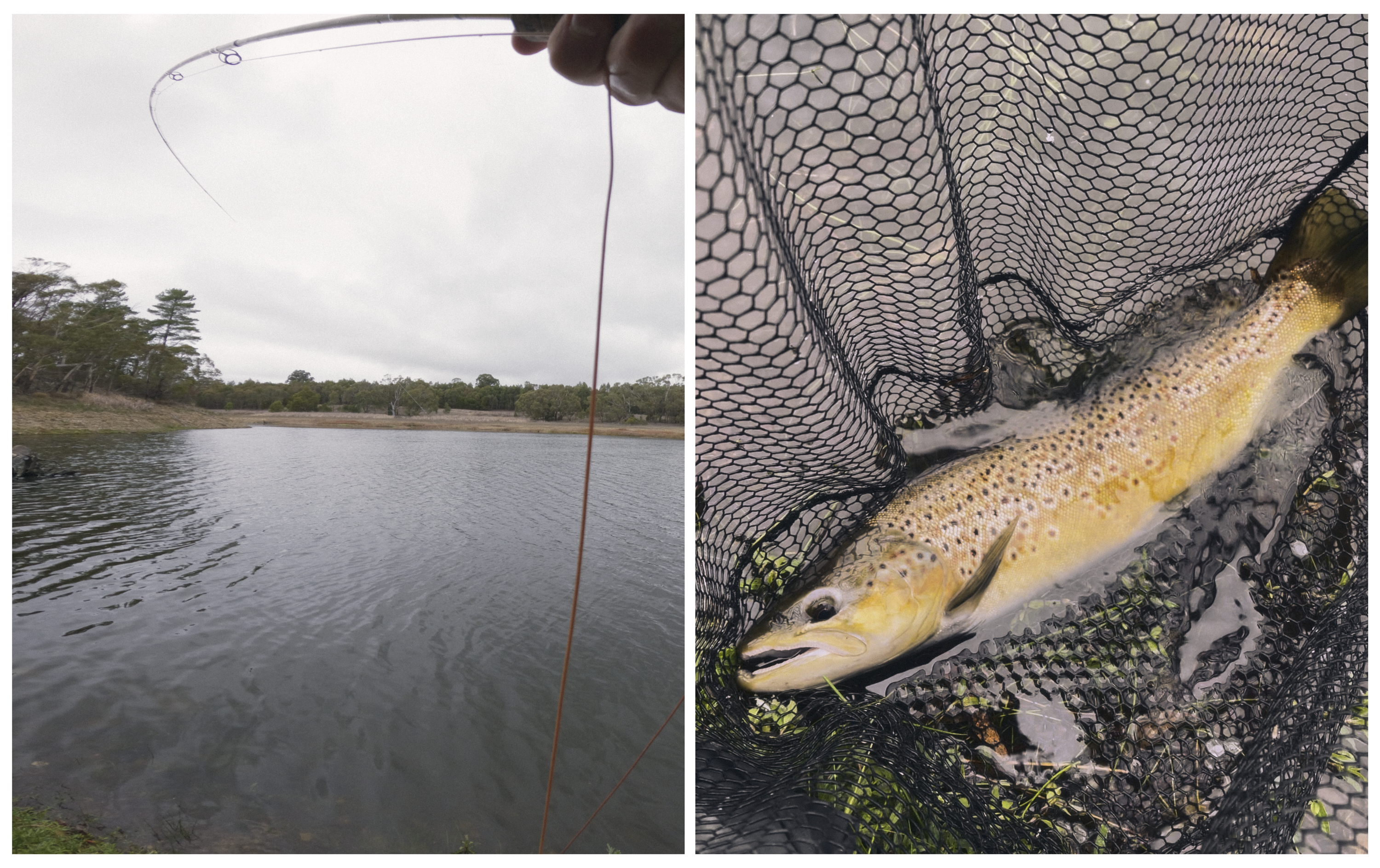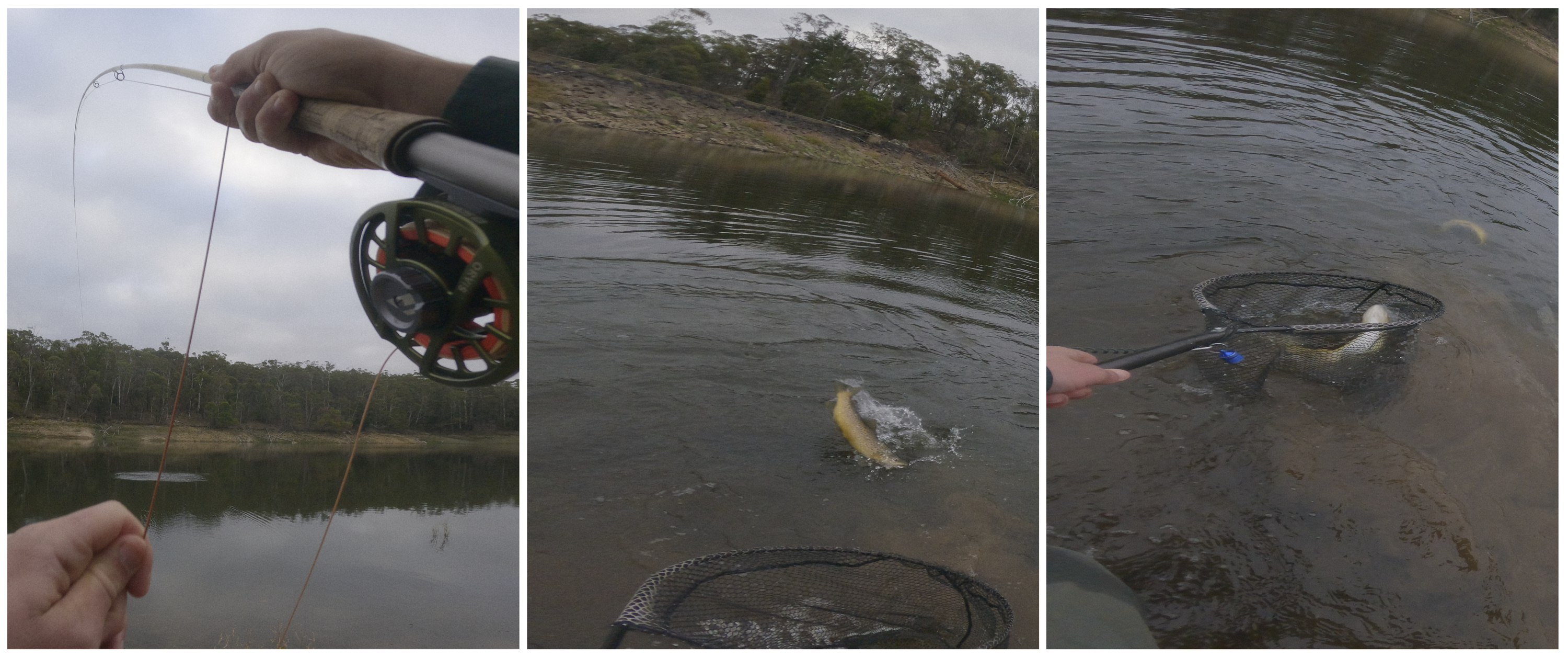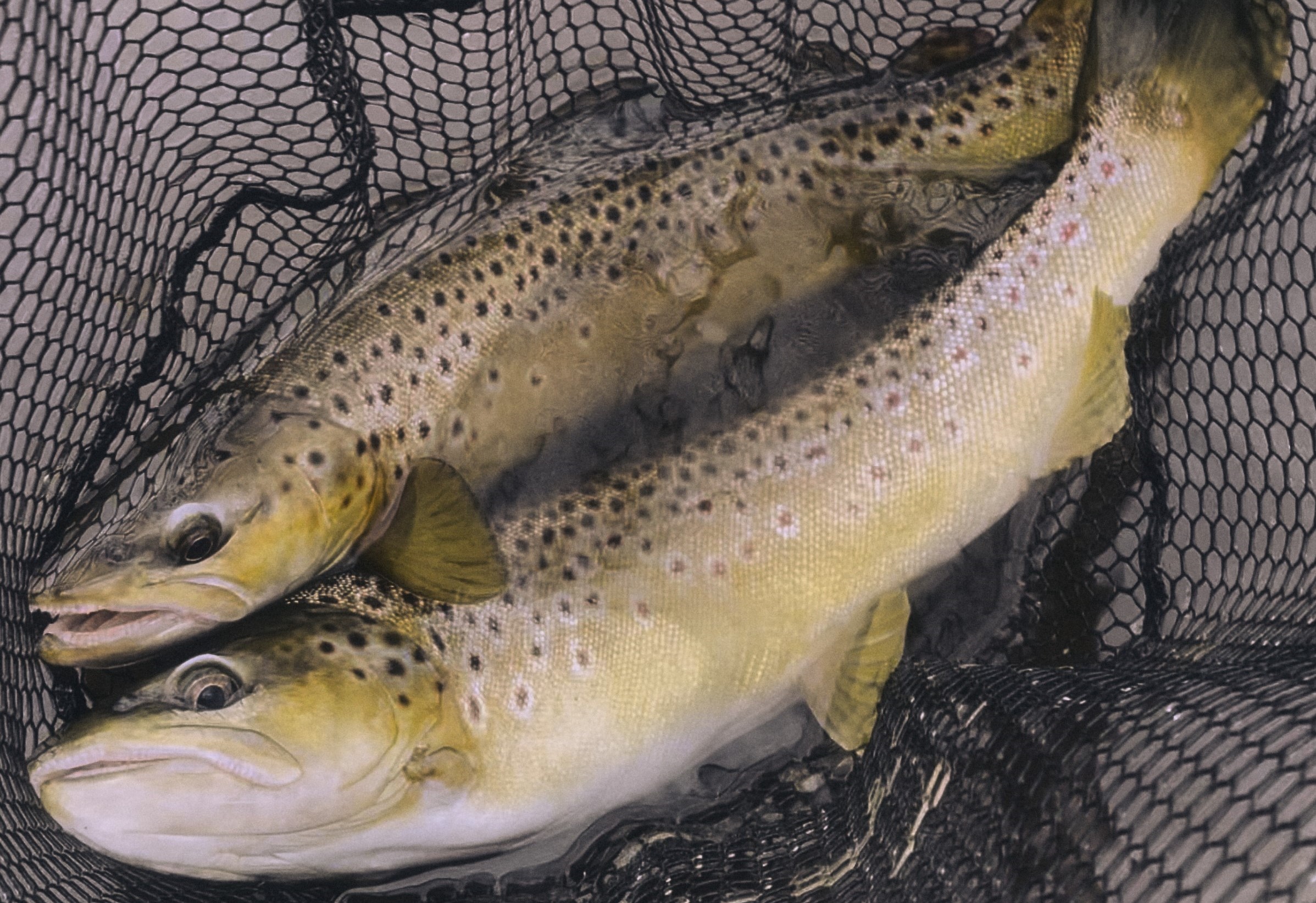
Polaroided on the edges.
After a bit of light rain and then a run of crisp mornings, I’ve been poking around some of the lakes an hour or so west of Melbourne.
Some smaller waters out west have caught my attention lately. Their modest size and bushy surroundings mean they fish well in most conditions. Steep, tree-lined banks provide shade on sunny days and shelter from the wind. This time of year, with browns (and probably rainbows too, though I haven’t seen any yet) cruising the edges, the margins are a good place to start—especially around shallow weedbeds and rocky shores. The lake pictured is typical: easy to walk when low, and its steep banks are perfect for polaroiding, with just enough structure to keep things interesting.
I was on the water by 7:30 am. It started brisk at 5°C and warmed to 14°C by early afternoon. Cloud cover hung around most of the day, with a light southwesterly breeze ruffling the surface into a soft chop. The lake was low, about 25%, exposing logs, weed-beds, and rocky shelves which are usually submerged. It felt more open and readable, but raw — almost skeletal.
Swallows zipped around all day, picking off midges. I didn’t see any trout rising, but something was happening just beneath the surface.
I fished my usual two-fly setup for this time of year, when I don’t see any fish activity: a stick caddis on top and a black-orange beaded Magoo on the point. The first moment with a fish came in a quiet bay. Working a slow figure-eight retrieve, a brown exploded on the sticky, just skating the surface. It missed completely. From then on, I finished each retrieve more deliberately, letting the flies hang or skate, and always making a point of seeing them before lifting out of the water.
Later, I reached a half-submerged tree in the shallows. A cast wide of the structure drew a solid eat. The fish tore off toward the timber. After a tense few moments trying to keep it from burying itself, it came free, thrashed, and slid into the net. This fella decided the Magoo was worth inhaling.

The afternoon slowed but never fully switched off. A few more strikes and flashes came. Some felt more like reaction strikes than proper eats — it was hard to say. I’m no trout, but they just seemed keen to bump that Magoo around.

Right near the end of the day, a highlight. Same flies, same rhythm. A bump, a missed strike, then another that came tight. A good brown—it leapt before powering off through the shallows. As it thrashed near the surface, I saw another boil behind it. The fight went sluggish and off-kilter as another fish of similar size grabbed the trailing Magoo. I scooped the dropper fish into the net, but the fish on the point took off, testing the 4x tippet. Chaos for a second, but the netted fish fought back, pulling the fish on the point toward the bank before finally falling in the net.
On that note, I called it a day.

Two for one!
A few days later, I returned on a bright, still morning. From first light, fish were quietly rising to midges—soft dimples barely disturbing the surface. Once the sun was up, the browns began their shoreline patrols. Perfect conditions for polaroiding the edges; a stick caddis and red buzzer did the trick, with two browns to the net.

Honestly, I didn’t have high hopes for the lakes after a dry summer and expected slow going. But the opposite has been true. The trout are active, and can be easier to locate in these low water conditions, gathering in pockets around structure or cruising drop-offs. They’ve been in beautiful condition across several lakes, evidently making the most of cooler days and cool margins.











